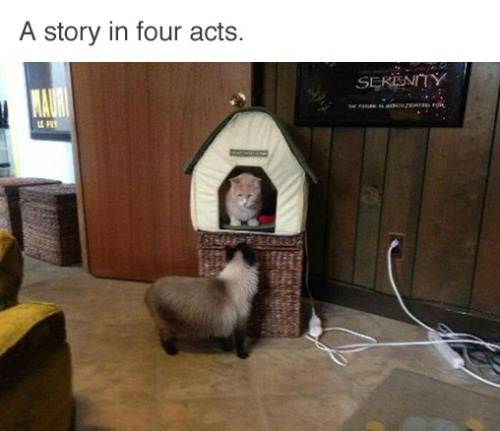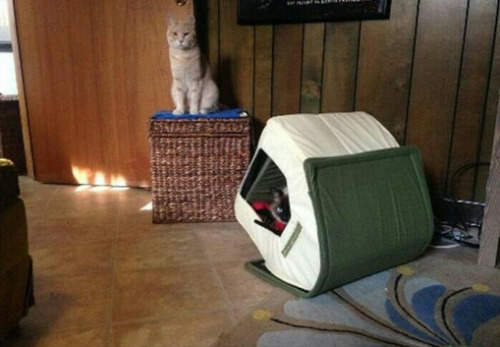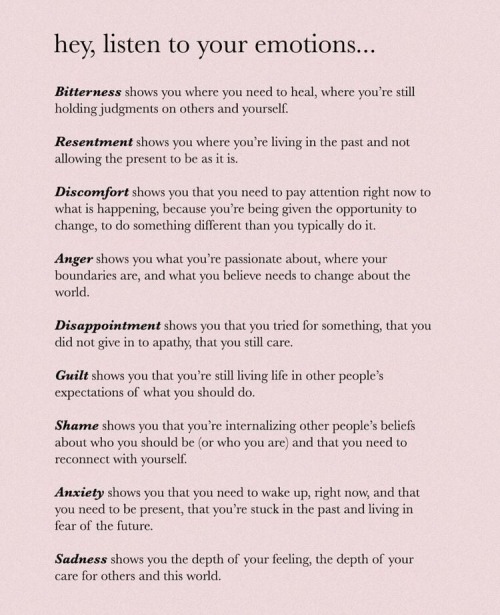You Wake Up One Sunday To Discover That Your Idiot Neighbour Jerry Has Declared Your Suburban Street
You wake up one Sunday to discover that your idiot neighbour Jerry has declared your suburban street to be an independent republic, erected barricades and commandeered your VW camper van as a mobile base of operations for the provisional government.
More Posts from Ourvioletdeath and Others




Onward, steed!

Homestuck is the best webcomic ever made.
This is because Homestuck took full advantage of its medium. It’s a webcomic, it doesn’t have the same limitations as a normal comic. It was more like an event than a book. Even when people go back, read all of homestuck years after today, it won’t be the same. Homestuck is and always was about the community. The frantic fanart drawing, discussions, theory crafting, all of it.
For me, the ending felt off because Homestuck’s thing was that it was always ongoing. There was always another twist waiting around the corner, always some hidden meaning.
This time there isn’t anything. We did it. They did it. The game is over.
We won

Peering into neural networks
Neural networks, which learn to perform computational tasks by analyzing large sets of training data, are responsible for today’s best-performing artificial intelligence systems, from speech recognition systems, to automatic translators, to self-driving cars.
But neural nets are black boxes. Once they’ve been trained, even their designers rarely have any idea what they’re doing — what data elements they’re processing and how.
Two years ago, a team of computer-vision researchers from MIT’s Computer Science and Artificial Intelligence Laboratory (CSAIL) described a method for peering into the black box of a neural net trained to identify visual scenes. The method provided some interesting insights, but it required data to be sent to human reviewers recruited through Amazon’s Mechanical Turk crowdsourcing service.
At this year’s Computer Vision and Pattern Recognition conference, CSAIL researchers presented a fully automated version of the same system. Where the previous paper reported the analysis of one type of neural network trained to perform one task, the new paper reports the analysis of four types of neural networks trained to perform more than 20 tasks, including recognizing scenes and objects, colorizing grey images, and solving puzzles. Some of the new networks are so large that analyzing any one of them would have been cost-prohibitive under the old method.
The researchers also conducted several sets of experiments on their networks that not only shed light on the nature of several computer-vision and computational-photography algorithms, but could also provide some evidence about the organization of the human brain.
Neural networks are so called because they loosely resemble the human nervous system, with large numbers of fairly simple but densely connected information-processing “nodes.” Like neurons, a neural net’s nodes receive information signals from their neighbors and then either “fire” — emitting their own signals — or don’t. And as with neurons, the strength of a node’s firing response can vary.
In both the new paper and the earlier one, the MIT researchers doctored neural networks trained to perform computer vision tasks so that they disclosed the strength with which individual nodes fired in response to different input images. Then they selected the 10 input images that provoked the strongest response from each node.
In the earlier paper, the researchers sent the images to workers recruited through Mechanical Turk, who were asked to identify what the images had in common. In the new paper, they use a computer system instead.
“We catalogued 1,100 visual concepts — things like the color green, or a swirly texture, or wood material, or a human face, or a bicycle wheel, or a snowy mountaintop,” says David Bau, an MIT graduate student in electrical engineering and computer science and one of the paper’s two first authors. “We drew on several data sets that other people had developed, and merged them into a broadly and densely labeled data set of visual concepts. It’s got many, many labels, and for each label we know which pixels in which image correspond to that label.”
The paper’s other authors are Bolei Zhou, co-first author and fellow graduate student; Antonio Torralba, MIT professor of electrical engineering and computer science; Aude Oliva, CSAIL principal research scientist; and Aditya Khosla, who earned his PhD as a member of Torralba’s group and is now the chief technology officer of the medical-computing company PathAI.
The researchers also knew which pixels of which images corresponded to a given network node’s strongest responses. Today’s neural nets are organized into layers. Data are fed into the lowest layer, which processes them and passes them to the next layer, and so on. With visual data, the input images are broken into small chunks, and each chunk is fed to a separate input node.
For every strong response from a high-level node in one of their networks, the researchers could trace back the firing patterns that led to it, and thus identify the specific image pixels it was responding to. Because their system could frequently identify labels that corresponded to the precise pixel clusters that provoked a strong response from a given node, it could characterize the node’s behavior with great specificity.
The researchers organized the visual concepts in their database into a hierarchy. Each level of the hierarchy incorporates concepts from the level below, beginning with colors and working upward through textures, materials, parts, objects, and scenes. Typically, lower layers of a neural network would fire in response to simpler visual properties — such as colors and textures — and higher layers would fire in response to more complex properties.
But the hierarchy also allowed the researchers to quantify the emphasis that networks trained to perform different tasks placed on different visual properties. For instance, a network trained to colorize black-and-white images devoted a large majority of its nodes to recognizing textures. Another network, when trained to track objects across several frames of video, devoted a higher percentage of its nodes to scene recognition than it did when trained to recognize scenes; in that case, many of its nodes were in fact dedicated to object detection.
One of the researchers’ experiments could conceivably shed light on a vexed question in neuroscience. Research involving human subjects with electrodes implanted in their brains to control severe neurological disorders has seemed to suggest that individual neurons in the brain fire in response to specific visual stimuli. This hypothesis, originally called the grandmother-neuron hypothesis, is more familiar to a recent generation of neuroscientists as the Jennifer-Aniston-neuron hypothesis, after the discovery that several neurological patients had neurons that appeared to respond only to depictions of particular Hollywood celebrities.
Many neuroscientists dispute this interpretation. They argue that shifting constellations of neurons, rather than individual neurons, anchor sensory discriminations in the brain. Thus, the so-called Jennifer Aniston neuron is merely one of many neurons that collectively fire in response to images of Jennifer Aniston. And it’s probably part of many other constellations that fire in response to stimuli that haven’t been tested yet.
Because their new analytic technique is fully automated, the MIT researchers were able to test whether something similar takes place in a neural network trained to recognize visual scenes. In addition to identifying individual network nodes that were tuned to particular visual concepts, they also considered randomly selected combinations of nodes. Combinations of nodes, however, picked out far fewer visual concepts than individual nodes did — roughly 80 percent fewer.
“To my eye, this is suggesting that neural networks are actually trying to approximate getting a grandmother neuron,” Bau says. “They’re not trying to just smear the idea of grandmother all over the place. They’re trying to assign it to a neuron. It’s this interesting hint of this structure that most people don’t believe is that simple.”

It typically takes coral 25 to 75 years to reach sexual maturity. With a new coral fragmentation method, it takes just 3.








(via BoringEnormous)

Rage
Creative title, right? Probably not to be honest, it sounds like something a hipster would post, or an emotional teenage girl(not being sexist, just providing a cliché example). Nonetheless, I feel rather compelled to put that as the title, mainly because it’s something that I feel pretty often. Not necessarily the anger, but the violent aspect of rage, that nearly uncontrollable violence that builds up inside you, is something that I feel virtually every day. Goodness, I sound so whiny, but I feel like I have to express it somehow or else it’s going to eat away at my emotional health.
I recognize that violence isn’t the answer, but it’s infuriating to be unable to do anything other than think about what you would do to someone who truly deserves to suffer. Of course it sounds rather sociopathic, but there are people to truly need to get whats coming to them from time to time.
It’s hard to describe the feeling I get... it’s a mixture of frustration with anxiety, which produces helplessness and then finally creates the violent urge to hurt someone. I have never done anything under the influence of this urge except for once, which I would rather not get into as I was luckily stopped before things got too far. I learned to control the rage, but the build up of it makes it harder and harder to control. I realized that working out often helps reduce the buildup, but what happens when you don’t have time to work out and you are constantly placed under a lot of stress? Well, you have several options; blow up, take it out on someone, or take a break.
Of course, the most socially acceptable answer is to take a break, which would usually require going out for some fresh air, but in more extreme circumstances it could mean take a day or two off from work or school, and that SUCKS. Taking a day off will just add to your workload afterwards, since you’ll have to make up for the time you lost the last day. Conversely, what would happen if you let your rage out? Well, if you let it out on someone else, you could hurt them, both mentally and physically. And just blowing up could get you kicked out of your workplace, and maybe even sent to jail if things get physical.
So what is there to do? This is a problem that I find myself to be facing rather often, and it always feels like a lose-lose situation. Maybe by talking about it things could get better, but who really wants to hear someone bitch about their life? I personally would find that to be extremely boring, and it might not even work! The way I found to be a good reliever is just to write it out, but its taken me several days to put this all into something concise, a so what happens to those people who don’t have the time? I guess they turn to drugs? I’m not really sure to be honest.
Maybe my point got lost while I was blabbering about this whole thing, but what I meant to emphasize was that stress, rage and anger can easily build up in people, and sometimes there really is just no way to relieve it, which is extremely frustrating to me.
Goodness, I wrote way too much... Oh well, it helped me vent, which I guess was the purpose of this. If anyone ever actually reads this, I hope you’ve enjoyed my rather long rant on rage and anger, and I hope it was somehow beneficial to you, in whatever way that may be.
The Devil is known for being incapable of love. You are determined to romance the living hell out of him.
Aliens have invaded and are taking over. Their technology, intelligence, and power is unstoppable. They just didnt plan on one thing: The old gods returning.
-
 radravenpaw liked this · 3 years ago
radravenpaw liked this · 3 years ago -
 aguefortstudent liked this · 3 years ago
aguefortstudent liked this · 3 years ago -
 deadpanpenguin liked this · 6 years ago
deadpanpenguin liked this · 6 years ago -
 randomreadery-blog liked this · 6 years ago
randomreadery-blog liked this · 6 years ago -
 lilgirl47 liked this · 6 years ago
lilgirl47 liked this · 6 years ago -
 wildforestferret liked this · 6 years ago
wildforestferret liked this · 6 years ago -
 sammichly liked this · 6 years ago
sammichly liked this · 6 years ago -
 42chordsong liked this · 7 years ago
42chordsong liked this · 7 years ago -
 40andslip reblogged this · 7 years ago
40andslip reblogged this · 7 years ago -
 falling-from-heavens-favor liked this · 7 years ago
falling-from-heavens-favor liked this · 7 years ago -
 kitkat-of-doom reblogged this · 7 years ago
kitkat-of-doom reblogged this · 7 years ago -
 kitkat-of-doom liked this · 7 years ago
kitkat-of-doom liked this · 7 years ago -
 technonecromancerderaxus liked this · 7 years ago
technonecromancerderaxus liked this · 7 years ago -
 neon-angels-system liked this · 7 years ago
neon-angels-system liked this · 7 years ago -
 iamyourchair liked this · 7 years ago
iamyourchair liked this · 7 years ago -
 lordofhell666 liked this · 7 years ago
lordofhell666 liked this · 7 years ago -
 reachbluesky liked this · 7 years ago
reachbluesky liked this · 7 years ago -
 tiredjustsoverytired liked this · 7 years ago
tiredjustsoverytired liked this · 7 years ago -
 an-introvert-reader liked this · 7 years ago
an-introvert-reader liked this · 7 years ago -
 ldelta liked this · 7 years ago
ldelta liked this · 7 years ago -
 heir-of-the-founders liked this · 7 years ago
heir-of-the-founders liked this · 7 years ago -
 ephhemeralite liked this · 7 years ago
ephhemeralite liked this · 7 years ago -
 noris-stoneward liked this · 7 years ago
noris-stoneward liked this · 7 years ago -
 grassysock liked this · 7 years ago
grassysock liked this · 7 years ago -
 enclaveraider liked this · 7 years ago
enclaveraider liked this · 7 years ago -
 hoxford9 liked this · 7 years ago
hoxford9 liked this · 7 years ago -
 falut liked this · 7 years ago
falut liked this · 7 years ago -
 randomstuffifoundandrebloged liked this · 7 years ago
randomstuffifoundandrebloged liked this · 7 years ago -
 captainstrangesweetscollection liked this · 7 years ago
captainstrangesweetscollection liked this · 7 years ago -
 thegreatesttrash liked this · 7 years ago
thegreatesttrash liked this · 7 years ago -
 jjandjim liked this · 7 years ago
jjandjim liked this · 7 years ago -
 rave-bird liked this · 7 years ago
rave-bird liked this · 7 years ago -
 les-le-les liked this · 7 years ago
les-le-les liked this · 7 years ago -
 spookywombatbailiffkid-blog liked this · 7 years ago
spookywombatbailiffkid-blog liked this · 7 years ago -
 tumbleweedhatsfit liked this · 7 years ago
tumbleweedhatsfit liked this · 7 years ago -
 thatfurrylightelemental reblogged this · 7 years ago
thatfurrylightelemental reblogged this · 7 years ago -
 thatfurrylightelemental liked this · 7 years ago
thatfurrylightelemental liked this · 7 years ago -
 grimbunnoir liked this · 7 years ago
grimbunnoir liked this · 7 years ago -
 saratza liked this · 7 years ago
saratza liked this · 7 years ago -
 i-can-do-tricks liked this · 7 years ago
i-can-do-tricks liked this · 7 years ago -
 water--apocalypse reblogged this · 7 years ago
water--apocalypse reblogged this · 7 years ago -
 huntty123 liked this · 7 years ago
huntty123 liked this · 7 years ago